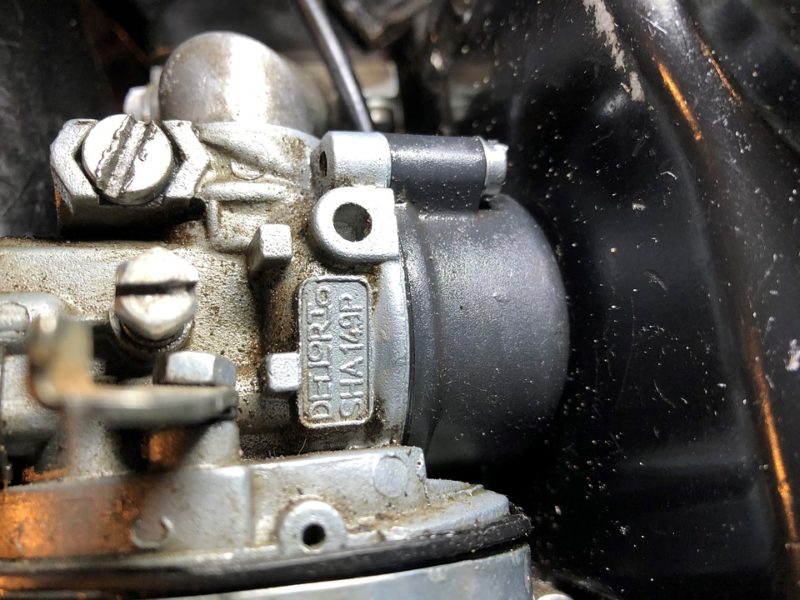How to clean carburetor on pressure washer? It includes following guidelines of removing the cap on a spark plug first, turning the fuel valve, draining the petrol, spraying the carburetor bowl interior using carburetor cleaner, removing the jet using a flathead screwdriver, spraying the carburetor cleaner, and using a wire brush in removing gummed gasoline or particles.
Spraying the rest of the components with a cleaner, servicing the carburetor in the idle jet, and re-assembling the carburetor by screwing its jet back to the stem of the carburetor, getting the gasket connected to a carburetor bowl, and ensuring no gasoline surrounds the carb bowl are essential.
Understand that the carburetor is among the essential pieces in a gas pressure washer. It demands some attention from one time to another. Never leave it alone, or else it will become clogged. The pressure washer, later on, stops operating. Let’s begin to read this article!
Steps To Clean Carburetor On Pressure Washer
How to clean carburetor on pressure washer? Follow these guidelines when cleaning the carburetor on a pressure washer:
Step #1. Removing the cap on a spark plug
Take the cap on the spark plugs away, thus avoiding starting the engine. Turn on the pressure washer fuel valve.
Step #2. Draining the petrol
The next thing is to drain the so-called petrol. Eliminate the screw that holds the carburetor bowl that continues to the bottom. Let the bowl drain entirely into the container. Check the quality of the fuel. See if there is dirt, rust, old gasoline, and corrosion fragments. Varnish tends to build up underneath the carburetor bowl if the engine runs. You may also want to read about how to start a gas pressure washer and how to drain gas from pressure washers.
Step #3. Spraying the carburetor bowl interior
Spray the bowl interior of the carburetor using a carburetor cleaner. Wipe it until it is clean from sticky residue. Wipe moisture inside the bowl until it gets dry.
Step #4. Removing the jet using a flathead screwdriver
The primary jet route is where the gasoline enters and continues the combustion chambers coming from the carburetor. Take the jet away utilizing a flathead screwdriver that examines a channel. Prepare a plan when collecting it.
Step #5. Spraying carburetor cleaner into the clogged jet channel
See if there is a clog in the jet channel. If yes, spray a carburetor cleaner onto it. Make use of a wire brush that eliminates gummed gasoline or particles. Avoid enlarging the passage at the initial dimensions. The gas travels through with a clean, beautiful, shining, round hole. You may also read about how to unclog a pressure washer.
Step #6. Spraying the rest of the components
Spray on the rest of the components of the carburetor. Make use of a cleaner to remove debris, blocking the jet and breaking free. Use a cloth when collecting an overspray.
Step #7. Servicing the topmost part of the carburetor
Above the carburetor is where you find the idle jet. Service it right away. The idle jet detaches from the top. Some are made up of plastic materials to push in. Plus, they seal with the O-rings. Then, pass the wire brush to the idle jet until you leave it clean. Clear the aperture.
Step #8. Re-assembling the carburetor
Reassemble the carburetor as you screw the primary jet to its carburetor stem and tight it properly.
Step #9. Getting the gasket connected to a carburetor bowl
Ensure the O-ring or flat gasket connects to a carburetor bowl and body. Get the screws tightened, including the washer connecting the carburetor bowl. Never pull it excessively.
Step #10. Ensuring no gasoline is surrounding a carb bowl
Ensure no gasoline will wrap the carburetor bowl. Place another one for a spark plug. Turn its fuel valve again before you begin the engine.
Warning Signs To Clean Carburetor On Pressure Washer
Some symptoms and indications can tell you if a carburetor is clogged.
#1. Popping or sneezing sound
Sneezing or popping sounds come from a carburetor. It means to say a fuel and ait mixture go unbalanced. There is a popping noise, which means not an adequate amount of gasoline. It does not move throughout the carburetor. It then causes more hardships in the chamber.
#2. Leaking
A clogged carburetor is associated with a fuel not passing through the carburetor. If there is a leak from the pressure washer carburetor, it means something blocks the gasoline as it flows. The fuel starts to overflow the carburetor. Unclog it if you see it is leaking.
#3. Working problems
Gasoline and air do not move through if there is a blockage in the carburetor. That’s why a pressure washer doesn’t start. The problem is associated with a faulty component. A dirty carburetor is due to a pressure washer facing a starting problem. An engine does not run if clogging is in the carburetor. An imbalance in the gasoline and air combined is there. Thus, the engine does not perform as expected. Actually, a clogged carburetor causes malfunctioning in a machine.
It’s A Wrap!
Now you learn how to clean carburetor on pressure washer. Follow the steps correctly to clean it entirely and return to its working condition. Remember to prepare the needed tools when cleaning this section. If a carburetor on a pressure washer needs some cleaning already, keep the warning signs in mind!

